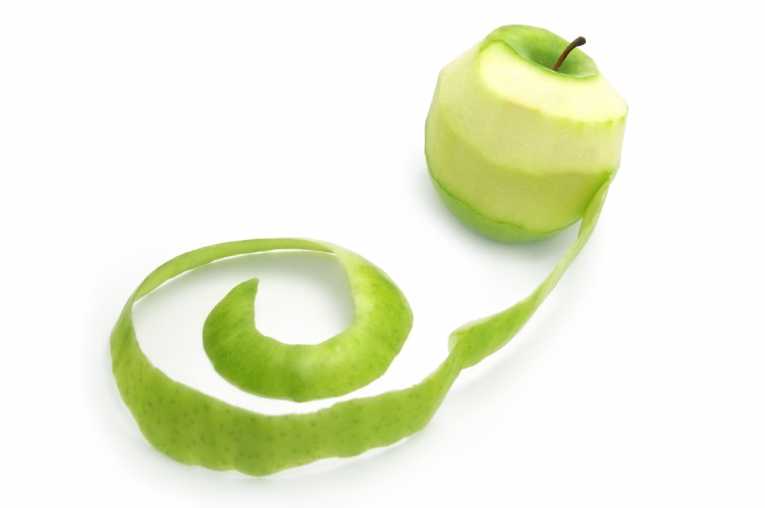A secret weapon that could help reduce obesity has been found in apple peel. Ursolic acid can partly protect against being greatly overweight, a study in mice has shown.
The special compound increases muscle and brown fat that burn extra calories, the University of Iowa study shows.
The research was published in the latest issue of the PLoS ONE journal.
Christopher Adams, University of Iowa associate professor of internal medicine and a Faculty Scholar at the Fraternal Order of Eagles Diabetes Research Center, says, "From previous work, we knew that ursolic acid increases muscle mass and strength in healthy mice, which is important because it might suggest a potential therapy for muscle wasting.
"In this study, we tested ursolic acid in mice on a high-fat diet - a mouse model of obesity and metabolic syndrome. Once again, ursolic acid increased skeletal muscle. Interestingly, it also reduced obesity, pre-diabetes, and fatty liver disease."
Muscle is excellent at burning calories, so extra muscle in mice treated with ursolic acid may explain how it reduces obesity, says Christopher Adams. Researchers were also amazed that ursolic acid also increased levels of brown fat, a fantastic burner of calories.
It was thought until recently that brown fat was only present in young children, but improved imaging shows adults have a little amount in the neck and shoulder blades.
Other studies link extra levels of brown fat with lower obesity and improved amounts of blood sugar and lipid.
The university team spent a few weeks examining mice on a high-fat diet. Half had ursolic acid added to their food - and although they ate more than the other half and performed the same exercise, they gained less weight. Their blood sugar level was close to normal and they did not develop fatty liver disease, which is related to obesity and affects around 20% of adults in America.
Additional research revealed that consuming ursolic acid added skeletal muscle that resulted in the animals being stronger, increased endurance and added to brown fat levels.
When the energy expenditure was investigated, it showed that those fed on ursolic acid burned more calories.
Christopher Adams says the team don't know how ursolic acid produces extra brown fat, if it does so in healthy mice and what the effect might be on people. That is the next step in the research.
The researchers included Steven Bullard, Kale Bongers, Michael Dyle, Scott Ebert, Christopher Elmore, Daniel Fox and Steven Kunkel.
The study received funds from the Fraternal Order of Eagles Diabetes Research Center at the University of Iowa, the National Institute of Arthritis and Musculoskeletal and Skin Diseases of the National Institutes of Health, the Department of Veterans Affairs, and the UI Research Foundation.










